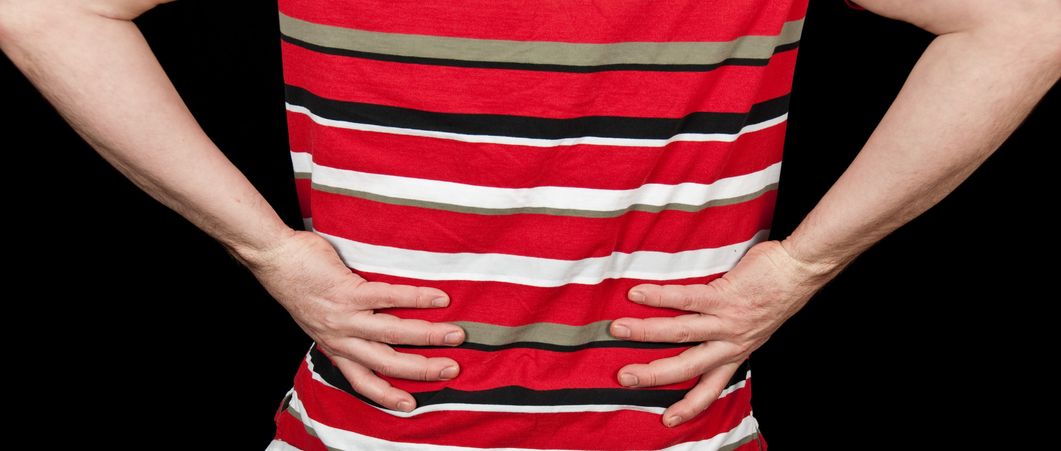Most people have felt pain or stiffness in the lower back at some point. Many know the feeling of tension and tightness in the neck and trapezius muscles – muscles that are far apart and that exemplify how excess strain in one area can lead to problems in another seemingly unrelated one.
It’s all about balance
The spine has three normal curves and a change in one curve can and does affect the other two. The ribs are attached to the thoracic, or mid-back, area, making it the most immobile of the three. Among other things, this means the neck and lower back being very closely related. An injury in one area can eventually damage the other because one area acts to compensate for the other in the event of an injury or excessive strain. For an injury to which the neck muscles are not repaired, the lower back will act to compensate to in order reestablish the best degree of balance possible. This eases the pressure on the nerves of the neck and decreases the pain. However, the lower back is now out of balance as a consequence and therefore at greater risk of injury and muscle damage over time from the increased muscle stress.
A similar situation can occur if the lower back is injured first: The neck compensates and becomes unbalanced, which leads to lower back ache. If the injured area is an unbalanced one, the pain will usually not go away, however. This is because the area of primary injury is unable to compensate for the new injury. This can lead to long-term problems and pain unless the muscle damage is repaired. The pain may even alternate from the neck to the low back as the body attempts to repair itself by allowing each area a rest from the nerve pressure. The excess muscle stress generally worsens, and over time it may cause additional tissue damage and tightness. For these reasons, the emphasis should be on prevention.
To keep muscle imbalances from happening, it’s necessary to understand the basics of potential causes. The origin of neck and low-back pain and tension is fairly straightforward. The pain is usually caused by damaged muscles that pull the spinal vertebrae and other related bones away from their normal positions. This places pressure on nerves and causes pain. Even this ‘balanced’ tightness can result in muscle spasms or excessive stress in related areas. The muscle damage is sometimes equal on both sides of the body, causing tension and stress to go unnoticed.
Muscle damage can happen in two main ways:
One is as a result of a direct injury that tears the muscle. If not treated properly, the muscle will heal along with scar tissue, becoming shortened and pulling the bone(s) to which it is attached out of place. The smallest, most freely movable bones – the vertebrae – are the most susceptible to this.
The other cause of muscle damage is excessive stress over an extended time. Such stress may be the result of either an imbalance somewhere in the body, improper use of the body, or poor posture. Rotating to one side while lifting, holding the telephone between the shoulder and the ear, and playing sports such as tennis, which tend to develop muscles biased to one side of the body, are common causes. But perhaps the most common cause is poor posture, particularly when sitting. Good posture can be thought of as the state of skeletal and muscular balance and alignment that protects the supporting structures of the body from progressive deformity and injury. Whether a person is standing, lying, squatting or stooping, good posture allows the muscles to function with maximum efficiency. However, even sitting with good posture can cause certain muscles to become shortened and tight. Such shortened muscles stress other areas and are more easily damaged. One way of dealing with this for people whose work requires them to sit for long stretches is to take frequent breaks: stand up, stretch and move around away from the desk, table, or whatever the workstation happens to be.
Muscles imbalances in the back also illustrate the importance of working to attaining a balanced physique, a state that goes beyond just visual aesthetics.

